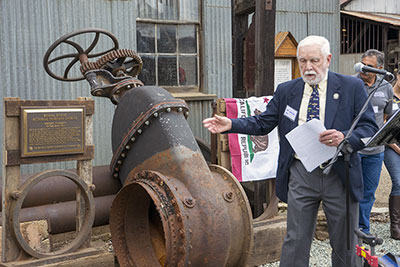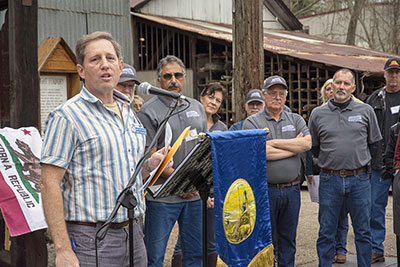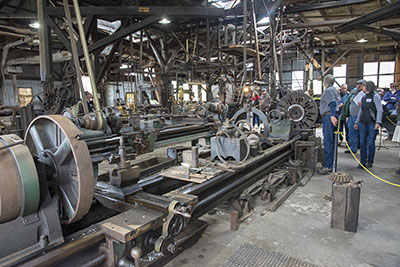Knight Foundry Redesignated as an ASME Landmark
Knight Foundry Redesignated as an ASME Landmark
The Knight Foundry in Sutter Creek, Calif., one of the few water-powered foundries in the United States, was recently redesignated as an ASME Historic Mechanical Engineering Landmark. The cast iron foundry and machine shop, which had been closed for 20 years prior to its reopening last year, was recognized for its significance — particularly to the Northern California mining industry — at a ceremony held March 10 at the facility.
Approximately 85 people attended the ceremony, including members of the ASME Sacramento-Sierra Nevada Section and members of the Native Sons of the Golden West, a service organization that also supported the event. ASME History & Heritage Committee member Lee Langston spoke at the event, which also included remarks from Jeff Muss, program chair for the Sacramento-Sierra Nevada Section.
Established in 1873 as Campbell, Hall and Co., the Knight Foundry was used to cast metal parts for the tools and machinery that were necessary to sustain Northern California’s booming gold and copper mining industry in the late 1800s.
After years of work developing improvements to the wooden water wheel technology that powered foundries of the era, Samuel Knight, a partner in Campbell, Hall and Co. who later bought out the foundry’s other partners, eventually created the patented cast iron, high-speed Knight Water Wheel, a breakthrough innovation that was a dominant force in the mining machinery industry prior to the introduction of the Pelton Water Wheel in the mid-1880s. Knight also developed a water motor — a small water wheel enclosed in a cast iron housing that could be attached to a high-pressure water sources.
The Knight Foundry, which continued producing mining equipment as well as machinery for the lumber industry and machine parts for pump and agricultural equipment manufacturers for most of the 20th century, was originally designated as an ASME’s 182nd Historic Mechanical Engineering Landmark in 1995. The facility was shuttered shortly thereafter, and it fell into disrepair in the ensuing years. Efforts to restore the foundry began in 2015, however, when members of the Sutter Creek City Council negotiated with the foundry’s owners to have the site donated to the city. The council members, who went on to form the Knight Foundry Alliance, then spearheaded initiatives to clean up the site and raise funds to reopen the facility to the public.
ASME has designated 265 Historic Mechanical Engineering Landmarks since the program was established in 1971. Click here more information on the ASME landmarks program.






